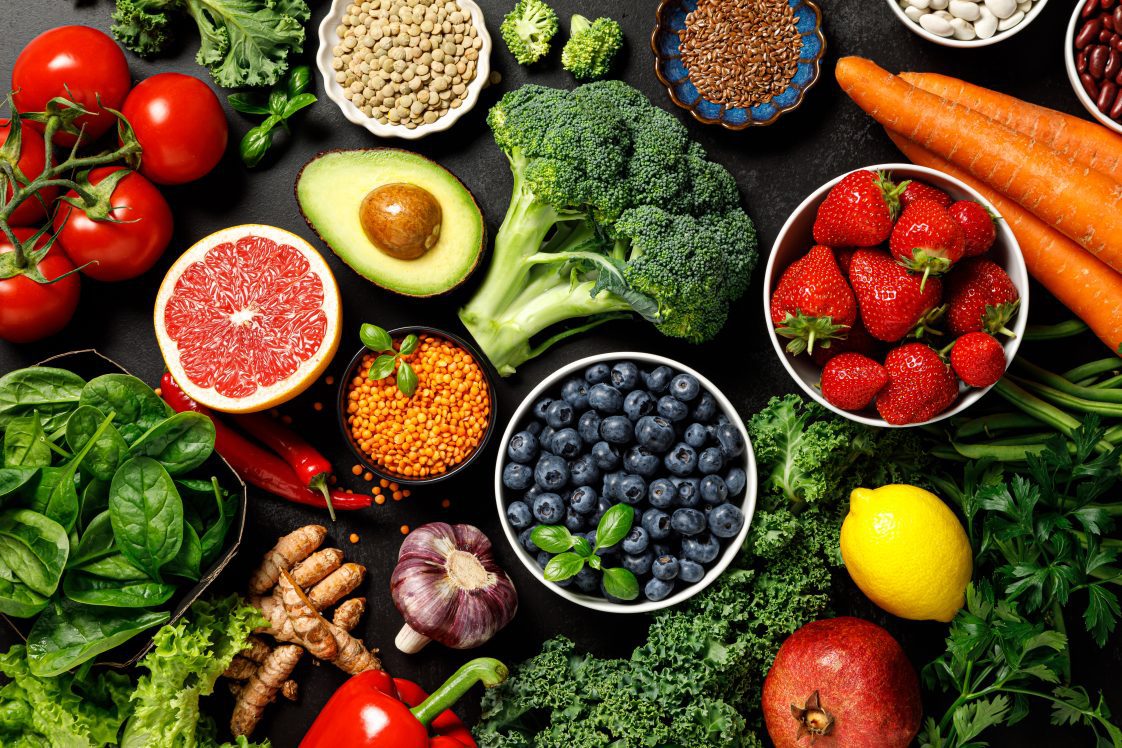College life is often a time of significant change, with students navigating new social environments, academic challenges, and for many, living away from home for the first time. Amidst these changes, maintaining a healthy diet can be difficult. To make informed dietary choices, it is important to understand the basics of nutrition. Let’s explore some key aspects to help you know how to navigate nutrition and be your healthiest version of you.
What Are the Basic Nutrients? Foods and beverages are vital to the human body for producing energy, contributing to tissue growth and development, regulating body processes, and preventing deficiency and degenerative diseases.
When building your plate, keep in mind these four components: Carbohydrates, Protein, Fat, and Color.
Carbohydrates: Carbohydrates are converted into glucose in the body, providing the primary source of fuel for the brain and physical activity. Your brain alone needs an estimated 120 grams of carbs daily to function. Carbohydrates are found in various foods, including grains, fruits, and vegetables, as well as in dairy and other milk alternatives such as soy, rice, nut milk.
Protein: Protein ensures the body stays healthy and works efficiently by aiding in many bodily processes. They are involved in the development, growth, and repair of muscle and other tissues. Proteins are mainly concentrated in the meat and beans/meat alternative group and the milk and milk alternative group. Examples include fish, lean meats, soy products, nuts, seeds, and beans.
Fats: Fats are involved in providing structure to cell membranes, aiding in the production of hormones, forming the insulation that wraps nerve cells, and facilitating the absorption of fat-soluble vitamins. Fats, also known as lipids, come from both plant and animal sources in our diet. Fats are concentrated in butter, margarine, salad dressings, and oils, but they are also found in meats, dairy products, nuts, seeds, olives, avocados, and some grain products.
Color (AKA Fruits & Vegetables) Incorporating color from fruits and vegetables will provide vitamins and minerals. While vitamins and minerals do not directly provide energy to the body, some aid in the extraction of energy from macronutrients and regulate bodily processes. Consuming fruits and vegetables also provides fiber, which supports healthy digestion. The nutrients in fruits and vegetables help fight off harmful germs, protect our bodies from developing certain diseases, and much more! The fruit and vegetable groups include fresh, frozen, canned, or dried fruits and vegetables. Any 100% vegetable or fruit juice is also part of this group.
Bottom Line
A balanced diet includes a variety of foods to ensure an adequate intake of all nutrients. You will likely not include all four groups (carbs, proteins, fats, and color) at every single meal- and that’s okay! A great goal is to strive to get most of these at most of your meals, most of the time. With nutrition, consistency is more important than perfection. Choose foods you actually enjoy, eat the rainbow, and aim for a balanced plate.
References
Barker T. (2023). Vitamins and Human Health: Systematic Reviews and Original Research. Nutrients, 15(13), 2888. https://doi.org/10.3390/nu15132888
Bernard, B. N., Louise, L. C., & Louise, D. (2018). The Effects of Carbohydrates, in Isolation and Combined with Caffeine, on Cognitive Performance and Mood-Current Evidence and Future Directions. Nutrients, 10(2), 192. https://doi.org/10.3390/nu10020192
Fink, H. H., & Mikesky, A. E. (2025). Practical applications in sports nutrition (7th ed.) Jones and Bartlett Learning.


